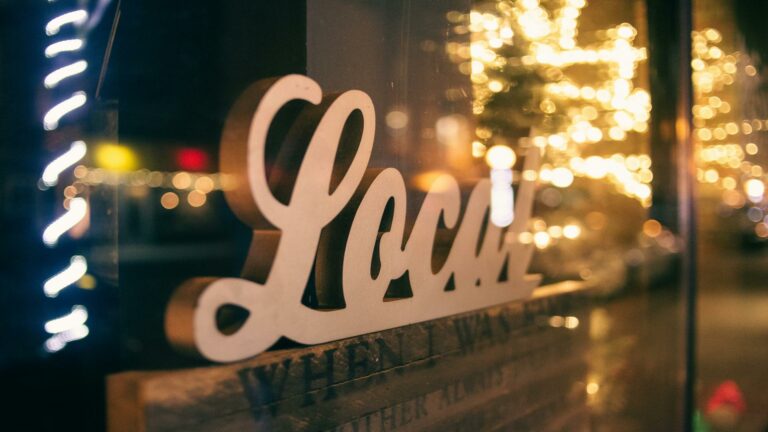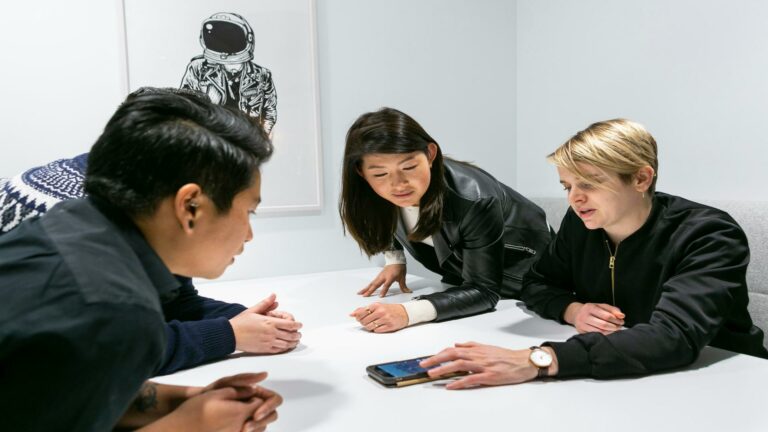Effective Website Color Psychology: Unlock the Power of Colors in Web Design
The Power of Effective Website Color Psychology
In the digital age, your website serves as the virtual storefront for your business, often being the first point of contact between your brand and potential customers. At Web Design London, we understand that effective website color psychology plays a crucial role in creating a lasting impression and driving user engagement. This comprehensive guide will explore how to harness the power of colors to enhance your website’s effectiveness and boost your online presence.
Understanding Color Psychology in Web Design
Color psychology is the study of how colors affect human behavior and emotions. When applied to web design, it becomes a powerful tool for influencing user perceptions and actions. Different colors can evoke various emotions and associations, which can significantly impact how visitors interact with your website.
- Red: Often associated with excitement, passion, and urgency
- Blue: Conveys trust, stability, and professionalism
- Green: Symbolizes growth, nature, and health
- Yellow: Represents optimism, cheerfulness, and energy
- Purple: Linked to luxury, creativity, and wisdom
By strategically incorporating these colors into your website design, you can create powerful links between your brand message and user emotions, ultimately influencing their behavior and decision-making process.
Implementing Effective Color Schemes
Creating an effective color scheme goes beyond simply choosing colors that look good together. It involves understanding your target audience, brand identity, and the message you want to convey. Here are some key considerations:
- Brand Consistency: Ensure your website colors align with your overall brand identity
- Contrast and Readability: Use contrasting colors to improve text legibility and highlight important elements
- Color Harmony: Employ color theory principles to create visually pleasing combinations
- Cultural Sensitivity: Be aware of cultural color associations when targeting a global audience
By carefully considering these factors, you can create a custom URL that not only looks appealing but also effectively communicates your brand message and guides users through your website.
Remember, the goal of effective website color psychology is not just to make your site look attractive, but to create an immersive user experience that resonates with your target audience and drives desired actions. By mastering this aspect of web design, you can significantly enhance your online presence and achieve your business objectives.
Understanding the Basics of Color Psychology
Harnessing the Power of Color Psychology in Website Design
Color psychology, the study of how colors influence human behavior and emotions, plays a crucial role in effective website design. When applied strategically, it can significantly enhance user experience, strengthen brand perception, and boost conversion rates. Let’s explore the psychological effects of different colors and how they can be leveraged in web design:
- Red: Evokes excitement, passion, and urgency. Ideal for call-to-action buttons or sale announcements.
- Blue: Conveys trust, stability, and professionalism. Commonly used by financial institutions and tech companies to build credibility.
- Green: Associated with nature, growth, and harmony. Perfect for eco-friendly brands or health-related websites.
- Yellow: Represents optimism, energy, and cheerfulness. Effective for grabbing attention and highlighting key information.
- Orange: Signifies enthusiasm, creativity, and adventure. Great for brands targeting younger audiences or promoting innovative products.
- Purple: Symbolizes luxury, royalty, and sophistication. Often used by high-end brands or beauty products.
- White: Denotes purity, cleanliness, and simplicity. Essential for creating clean, minimalist designs and improving readability.
- Black: Portrays power, elegance, and mystery. Effective for creating contrast and emphasizing other elements.
Understanding these color associations is fundamental to implementing effective website color psychology. However, it’s important to note that cultural differences can impact color perceptions, so consider your target audience when making color choices.
When applying color psychology to your website, consider the following tips:
- Align with brand identity: Choose colors that reflect your brand’s personality and values.
- Create contrast: Use contrasting colors to draw attention to important elements like call-to-action buttons or key content areas.
- Consider color harmony: Use color schemes that work well together, such as complementary or analogous colors.
- Test and iterate: Conduct A/B tests to determine which color combinations resonate best with your audience.
By leveraging color psychology effectively, you can create a visually appealing website that not only looks great but also elicits the desired emotional responses from your visitors. This can lead to increased engagement, improved user experience, and ultimately, better conversion rates for your online presence.
The Impact of Colors on User Behavior
The Impact of Color Psychology on Website Effectiveness
Colors play a crucial role in shaping user perception and behavior on websites. Effective website color psychology can significantly influence how visitors interact with your site, impacting everything from brand recognition to conversion rates. Here are some key ways in which strategic color choices can enhance your website’s effectiveness:
- Emotional Response: Different colors evoke various emotions and associations. For example, blue often conveys trust and professionalism, making it a popular choice for corporate websites.
- Brand Identity: Consistent use of colors that align with your brand’s personality can strengthen brand recognition and recall. This consistency across your website and other marketing materials creates a cohesive brand image.
- User Experience: Thoughtful color selection can improve navigation and usability. Using contrasting colors for call-to-action buttons, for instance, can make them more noticeable and clickable.
- Conversion Optimization: Strategic use of color can guide users’ attention to important elements on your site, potentially increasing conversion rates for desired actions.
- Accessibility: Considering color contrast is essential for ensuring your website is accessible to all users, including those with visual impairments.
By understanding and applying color psychology principles, you can create a more engaging, effective, and memorable website experience for your visitors. Remember to test different color schemes and monitor user behavior to optimize your site’s performance continually.
Implementing Effective Website Color Psychology: Best Practices
Implementing Effective Website Color Psychology
Understanding the importance of color psychology is just the first step. To truly harness its power in your website design, consider these key strategies:
- Choose a dominant color: Select a primary color that aligns with your brand’s personality and the emotions you want to evoke. For example, blue can convey trust and professionalism, while green might represent growth and nature.
- Create a cohesive palette: Build a harmonious color scheme around your dominant color. Use tools like color wheels to find complementary or analogous colors that work well together.
- Consider your audience: Different demographics may respond differently to colors. Research your target audience’s preferences and cultural associations with colors to make informed decisions.
- Use contrast wisely: Ensure readability by maintaining sufficient contrast between text and background colors. This is crucial for accessibility and user experience.
- Apply the 60-30-10 rule: Distribute colors in your design using this ratio: 60% dominant color, 30% secondary color, and 10% accent color. This creates visual balance and hierarchy.
- Test and iterate: Use A/B testing to compare different color schemes and their impact on user behavior. Analyze metrics like conversion rates and time on page to refine your color strategy.
Remember, effective color psychology in web design is about creating a cohesive visual experience that resonates with your audience and supports your brand’s goals. By thoughtfully applying these principles, you can create a more engaging and impactful website that drives results.
Case Studies: Effective Website Color Psychology in Action
Let’s look at some real-world examples of how effective website color psychology has improved website performance:
Tools for Effective Website Color Psychology
At Web Design London, we use various tools to implement effective website color psychology:
- Adobe Color: For creating harmonious color palettes
- Coolors: To generate color schemes and test color combinations
- Color Contrast Checker: To ensure accessibility standards are met
- Canva Color Wheel: For exploring color relationships and creating custom palettes
These tools, combined with our expertise, allow us to create visually stunning and psychologically effective websites for our clients.
The Future of Color in Web Design
Evolving Trends in Website Color Psychology
As technology evolves, so does the application of color in web design. The field of website color psychology continues to adapt to new trends and user preferences. Here are some emerging trends we’re keeping an eye on:
- Dark Mode Compatibility: With the increasing popularity of dark mode across devices and platforms, designers are now considering how their color schemes translate in both light and dark environments. This shift requires a deeper understanding of color contrast and accessibility in varying contexts.
- Gradient Resurgence: Gradients are making a comeback, offering a modern twist on traditional color applications. These subtle color transitions can add depth and visual interest to websites while maintaining a cohesive color scheme.
- Monochromatic Palettes: Minimalist design trends have led to an increased use of monochromatic color schemes. These palettes create a sense of harmony and sophistication, allowing content to take center stage.
- Bold and Vibrant Hues: In contrast to minimalist trends, some websites are embracing bold, vibrant colors to create memorable and engaging user experiences. This approach can be particularly effective for brands looking to make a strong visual impact.
- Contextual Color Adaptation: Advanced web technologies now allow for dynamic color adjustments based on user behavior, time of day, or even local weather conditions, creating a more personalized and responsive color experience.
By staying attuned to these evolving trends in website color psychology, designers can create more effective, engaging, and user-friendly digital experiences that resonate with modern audiences.
Conclusion: Harness the Power of Effective Website Color Psychology
Harnessing the Power of Effective Website Color Psychology
Effective website color psychology is a powerful tool in creating engaging, high-performing websites. At Web Design London, we combine our deep understanding of color psychology with cutting-edge design techniques to create websites that not only look great but also drive results.
Colors have a profound impact on human emotions and behavior. By strategically selecting and applying colors, we can influence how visitors perceive and interact with your website. For instance:
- Blue evokes trust and professionalism, making it ideal for corporate websites.
- Green symbolizes growth and harmony, perfect for eco-friendly or health-related brands.
- Red creates a sense of urgency and excitement, often used for call-to-action buttons.
- Yellow conveys optimism and clarity, great for grabbing attention in moderation.
Our expert designers at Web Design London carefully consider these psychological effects when crafting your website’s color scheme. We ensure that every hue, shade, and tint aligns with your brand identity and resonates with your target audience.
Whether you’re looking to redesign your existing website or create a new one from scratch, our team is here to help you harness the power of color psychology. We’ll work closely with you to understand your brand, your audience, and your goals, and translate these into a color scheme that resonates with your users and drives conversions.
Implementing effective color psychology goes beyond simply choosing attractive colors. It involves creating a harmonious balance, considering color accessibility for all users, and ensuring consistency across your entire digital presence. Our portfolio showcases how we’ve successfully applied these principles for various clients.
Don’t underestimate the impact that effective color use can have on your website’s performance. Contact Web Design London today, and let’s create a website that not only looks stunning but also leverages the psychological power of colors to boost your online presence and drive your business forward.













